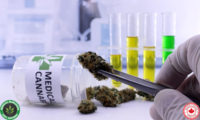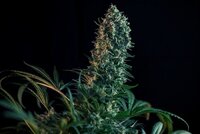- Thread starter
- #361
DrCannaCanadian
Well-Known Member
MY Medical Cannabis Experiences

By DrCannaCanadian
Investigation Of Cannabinoids & Terpenes - Searching For CBD Strains
Doctor Seedsman CBD from Seedsman
I like Doctor Seedsman CBD from Seedsman because it is a photoperiod and allows us greater control over the vegetation phase. Being a photoperiod also lends itself to cloning & mega cropping when we find a strong pheno!
By DrCannaCanadian
Investigation Of Cannabinoids & Terpenes - Searching For CBD Strains
Doctor Seedsman CBD from Seedsman
The fact that its parents are "classified" is a big minus. The yield is likely a bit low because it is short and squat - we'd prefer a 550 gram/m² plant if we can find one. The 9 weeks to harvest may be acceptable depending on the veg growth rate.
The hint at ginger & pine in the description suggests a sedative effect due to the presence of Pine (pinene terpene).
The fact that it is a mostly sativa hybrid makes it a good choice for the summer grow.
The big plus for me is the downloadable lab reports!
Very high CBD:THC ratio of 30:1
Description
Doctor Seedsman CBD is the crowning achievement resulting from a long and diligent effort seeking to discover a strain of cannabis with very high levels of CBD but with less than 1% THC resulting in healing effects without any psychoactivity. Many CBD-rich strains have been created but up until now the vast majority have virtually equal amounts of CBD and THC.
Dr. Seedsman CBD is 80% sativa and is descended from a plant that its breeders named CBD Asia due to its provenance and high CBD levels. This amazing plant didn't even need the usual inbreeding in order to both emphasise and stabilise its desirable traits. It is a robust plant growing vigorously yet staying quite short and squat in the process. Indoor flowering lasts for 8 - 9 weeks while outdoor harvests should be ready in early October in northern latitudes. Yields are high and the buds nice and dense and covered with loads of resin.
This plant is very aromatic but non-psychoactive. It has a powerful and penetrating taste with a pine and ginger note on the finish. CBD production has been laboratory tested at 20% while THC comes in at less than 1%. This represents a CBD:THC ratio in excess of approximately 30:1. The effect is very deeply relaxing to the body with no cerebral effects whatsoever.








